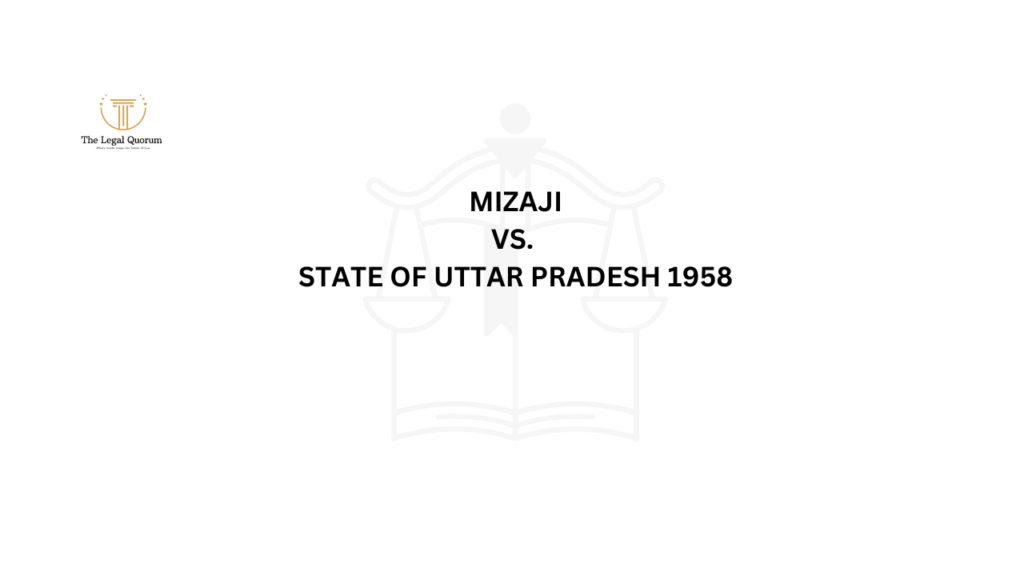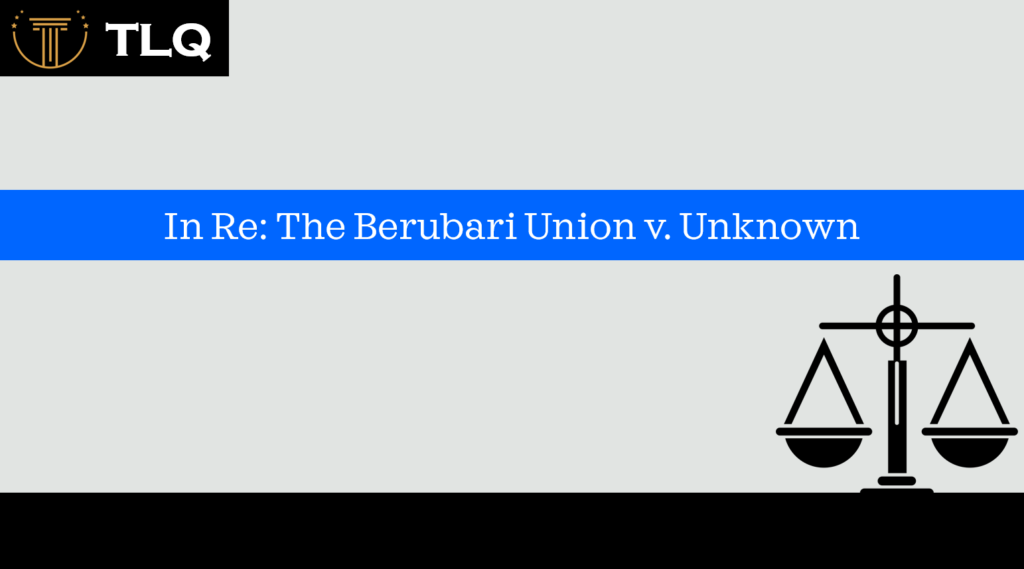Published On: 5th September, 2024
Authored By: Parigha Paygude
VPM’S TMC Law College, Thane
Table Of Contents
Classification of Marriages on religious basis
The Special Marriage Act, 1954
Historical Context:
Ancient Period:
In ancient India, marriages were primarily governed by religious customs and societal norms prevalent in different regions. Hindu, Buddhist, Jain, and later Islamic traditions influenced marriage practices. The concept of marriage as a sacrament (samskara) in Hinduism, for example, dates back thousands of years and has deeply rooted cultural significance.
Medieval Period:
During this period, Islamic Sharia law, introduced by Muslim rulers, coexisted with existing Hindu laws and customs. The personal laws of various communities began to be codified, reflecting both religious and customary practices.
Colonial Era:
British Rule (18th to mid-20th century):
The British colonial administration in India introduced uniform laws across different communities under the guise of promoting ‘modern’ legal standards. The first major intervention was the passage of the Hindu Marriage Act of 1955, which sought to codify and reform Hindu marriage customs and practices.
Post-Independence:
Constitutional Framework:
Upon gaining independence in 1947, India adopted a secular legal framework while respecting personal laws based on religion. The Constitution of India, enacted in 1950, guaranteed the right to equality and non-discrimination (Articles 14 and 15), but also allowed religious communities to follow their own personal laws related to marriage, divorce, inheritance, and adoption.
Classification of Marriages on a religious basis:
- Hindu Marriage Laws
- Muslim Marriage Laws
- Christian Marriage Laws
- Parsi Marriage Laws
Hindu Marriage Laws:
Hindu marriage laws in India are governed primarily by the Hindu Marriage Act, 1955. Here are some key aspects:
- Applicability: The Act applies to Hindus, including Sikhs, Jains, and Buddhists. It covers anyone who is not a Muslim, Christian, Parsi, or Jew by religion.
- Conditions for Marriage: To be legally valid, a Hindu marriage must fulfill certain conditions such as being monogamous (one spouse at a time), both parties being of legal age (18 years for the bride and 21 years for the groom), and being mentally and physically fit for marriage.
- Solemnization: Hindu marriages can be solemnized by customary rites and ceremonies or by any form recognized by customs. Registration of marriages is optional but advisable to establish legal proof of marriage.
- Void and Voidable Marriages: The Act specifies conditions under which marriages can be declared void (such as prohibited degrees of relationships, sapinda relationships, etc.) or voidable (such as when consent is obtained by force or fraud).
- Divorce and Maintenance: The Act provides provisions for divorce under specific grounds like adultery, cruelty, desertion, conversion to another religion, etc. It also covers maintenance for spouses and children.
- Inheritance Rights: Children born out of Hindu marriages have inheritance rights in ancestral as well as self-acquired property of their parents.
Muslim Marriage Laws:
In India, Muslim marriage law encompasses diverse practices influenced by different Islamic schools of thought (Madhahib). Here is an overview of how marriages are approached by some prominent schools, as well as the concepts of valid marriage, voidable marriage, and void marriage within Indian Muslim law:
Muslim Marriage Law as per Various Schools of Thought:
-
Hanafi School:
- Prevalence: Predominant among Muslims in India, especially in northern and western regions.
- Marriage Contract: Emphasizes the importance of the marriage contract (nikahnama) outlining terms such as mahr (dowry) and other conditions agreed upon by both parties.
- Valid Marriage Requisites: Requires offer (ijab) from one party and acceptance (qabul) from the other in the presence of witnesses. Consent of both parties and their guardians (if applicable) is essential.
- Voidable Marriage: Can be annulled if there is a defect such as fraud, misrepresentation, or incapacity that affects the validity of consent.
- Void Marriage: Considered void if there is a fundamental defect from the beginning, such as a prohibited relationship or lack of legal capacity.
2. Shafi’i School:
- Practice: Followed by a minority of Muslims in southern India and parts of Kerala.
- Marriage Procedures: Similar to the Hanafi school but may have variations in the details of the marriage contract and procedural aspects.
- Valid Marriage Requisites: Emphasizes the offer (ijab) and acceptance (qabul) with clear consent and the presence of witnesses.
- Voidable Marriage: Can be annulled for reasons such as fraud, misrepresentation, or incapacity that undermines consent.
- Void Marriage: Declared void if there is a fundamental defect like a prohibited relationship or lack of legal capacity.
3. Maliki School:
- Practice: Minority adherence in certain regions like parts of Kerala and Lakshadweep.
- Marriage Principles: Similar to Hanafi and Shafi’i schools in many aspects, with specific emphasis on local customs and practices.
- Valid Marriage Requisites: Focuses on consent, offer (ijab), and acceptance (qabul) with the presence of witnesses.
- Voidable Marriage: Can be annulled for reasons affecting consent, such as fraud or incapacity.
- Void Marriage: Invalid from the outset due to fundamental defects, such as a prohibited relationship.
4. Hanbali School:
- Practice: Minimal presence in India; followed by small communities with ties to the Arab world.
- Marriage Practices: Generally, follows the same principles as other schools regarding marriage contracts and conditions.
- Valid Marriage Requisites: Stresses offer (ijab) and acceptance (qabul) with full consent and witnesses.
- Voidable Marriage: Recognizes annulment for reasons impacting consent or capacity.
- Void Marriage: Declared void for fundamental defects like prohibited relationships.
Valid Marriage, Voidable Marriage, and Void Marriage:
-
Valid Marriage:
- Definition: A marriage that fulfills all necessary conditions according to Islamic law and local legal requirements.
- Requisites: Includes valid offer (ijab) and acceptance (qabul) with clear consent, capacity of parties, and presence of witnesses.
- Consequences: Entitles parties to legal rights and responsibilities, including inheritance, maintenance, and legitimacy of children.
2. Voidable Marriage:
- Definition: Initially valid but can be annulled (voided) if certain conditions or defects are proven.
- Examples: Could include cases of fraud, misrepresentation, or incapacity that affect the validity of consent.
- Annulment: Can be sought through legal procedures to declare the marriage null and void retroactively.
3. Void Marriage:
- Definition: Marriage considered null and void from its inception due to fundamental defects.
- Examples: Includes marriages prohibited by Islamic law (such as within prohibited degrees of kinship), lack of legal capacity (such as mental incapacity), or absence of essential conditions like witnesses.
- Legal Status: Parties to a void marriage are considered never to have been married legally, and thus do not have legal rights and obligations as spouses.
Christian Marriage Laws:
The Indian Christian Marriage Act of 1872 governs Christian marriages in India, stipulating essential requirements and procedures for their solemnization and registration:
- Essentials for Solemnization: Christian marriages must be solemnized by an authorized Minister or Priest in a church. It requires voluntary consent, absence of coercion, and the presence of at least two witnesses.
- Conditions for Valid Marriage: Both parties must be Christians, with the bridegroom not younger than 21 and the bride not younger than 18. Neither party should have a living spouse.
- Authorized Persons: Individuals eligible to solemnize marriages include ordained ministers, clergy from specific denominations, and licensed individuals under the Act.
- Time, Place, and Registration: Marriages must occur between 6 AM to 7 PM in a church or chapel. Registration involves applying to local authorities, performed by the Marriage Registrar present during the ceremony.
- Penalties and Miscellaneous Provisions: The Act outlines penalties for non-compliance and miscellaneous provisions related to marriage procedures and registration.
Overall, the Act ensures that Christian marriages in India are conducted according to specific legal and procedural requirements, emphasizing the solemnization by authorized persons and registration with local authorities.
Parsi Marriage:
Parsi marriage, also known as a ‘Navjote’, is a sacred union celebrated within the Zoroastrian community, emphasizing both religious and cultural traditions. It typically involves several rituals and ceremonies that hold significant importance.
Requisites of Valid Parsi Marriage:
For a Parsi marriage to be considered valid:
- Consent: Both parties must willingly consent to the marriage without any coercion.
- Religious Ceremony: The marriage must be solemnized through Ashirvad ceremony conducted by a Parsi priest or ‘Dastur’.
- Witnesses: Presence of witnesses during the ceremony is essential to validate the marriage.
- Legal Requirements: Compliance with legal formalities such as registration under the Parsi Marriage and Divorce Act, 1936, is mandatory.
Registration of Parsi Marriage:
Under the Parsi Marriage and Divorce Act, 1936, the registration of a Parsi marriage is mandatory for legal recognition. The process involves:
- Application: The couple must apply to the local Registrar of Parsi marriages within whose jurisdiction the marriage was solemnized.
- Documentation: They need to submit documents such as a marriage certificate from the officiating priest, identity proofs, and affidavits if required.
- Verification: The Registrar verifies the documents and details provided.
- Issuance of Certificate: Upon successful verification, a marriage certificate is issued, officially recognizing the marriage under Indian law.
The Special Marriage Act, 1954:
The Special Marriage Act, 1954 is a significant legislation in India that allows individuals of different religions, castes, or nationalities to marry each other without converting to any other religion. Here are some key points about the Special Marriage Act:
- Purpose: It was enacted to provide a special form of marriage for those who wish to marry outside the traditional customs and rituals governing different religions in India.
- Applicability: The Act applies to the whole of India except the state of Jammu and Kashmir. It allows any two individuals, irrespective of their religion, to marry under its provisions.
- Conditions:
- Both parties must be of sound mind, capable of giving valid consent.
- They must not have any spouse living if they are already married.
- They should not be within the degrees of prohibited relationship unless the custom or usage governing each of them permits such a marriage.
4. Procedure:
- A notice of intended marriage is filed with the Marriage Officer of the district where either party has resided for at least 30 days prior to the date of giving such notice.
- The notice is then published by the Marriage Officer inviting objections, if any.
- After the expiration of 30 days from the date of publication of the notice, if no objections are received, the marriage may be solemnized at the specified marriage office.
5. Solemnization: The marriage is solemnized in the presence of the Marriage Officer, the parties to the marriage, and three witnesses. The Marriage Officer declares the marriage to be solemnized after proper verification.
6. Legal Effects:
- The marriage under the Special Marriage Act is a civil contract and is legally binding.
- The children born out of such marriages are legitimate and have rights equal to those born from marriages under personal laws.
7. Protection: The Act provides for the protection of the individuals intending to marry from threats or coercion by family or society.
Overall, the Special Marriage Act is a progressive legislation that promotes secularism and individual freedom in choosing a life partner in India. It provides an alternative to religious marriage laws, ensuring equality and safeguarding personal choices in matters of marriage.
Third gender Marriage:
In India, the recognition of marriage rights for the third gender community has been a subject of evolving legal interpretation and advocacy. Here are the key aspects related to marriage rights of the third gender in India:
- Legal Recognition: The recognition of the third gender category (transgender individuals) has been affirmed by the Supreme Court of India in its landmark judgment in the NALSA vs. Union of India case in 2014. The court recognized the rights of transgender persons to self-identify their gender and upheld their fundamental rights under the Constitution.
- Marriage Rights: While the specific issue of marriage rights for transgender individuals has not been explicitly addressed in legislation or court rulings to the extent of providing clear guidelines, the legal recognition of transgender persons’ identity has implications for their right to marry.
- Special Marriage Act: Transgender individuals can marry under the Special Marriage Act, 1954, which allows marriages irrespective of the parties’ religion, caste, or gender identity. This provides an avenue for transgender persons to marry without facing discrimination based on their gender identity.
- Legal Challenges and Progress: Despite legal recognition, transgender individuals often face practical challenges in exercising their marriage rights. Social stigma, lack of awareness among marriage officers, and administrative hurdles can hinder the implementation of these rights effectively.
- Advocacy and Awareness: Various advocacy groups and NGOs are working towards raising awareness about the marriage rights of transgender individuals. They advocate for inclusive policies and legal reforms to ensure equal access to marriage and related benefits.
- Judicial Precedents: Some lower courts have recognized the marriage rights of transgender individuals and upheld their right to marry under existing legal frameworks, such as the Special Marriage Act, emphasizing the principles of equality and non-discrimination.
Conclusion:
In summary, while the legal framework in India acknowledges the rights of transgender individuals, including their right to marry under the Special Marriage Act, there is ongoing advocacy and legal efforts to ensure that these rights are effectively implemented and respected, addressing the unique challenges faced by the third gender community.
In ancient India, marriages were guided by religious customs across various traditions including Hindu, Buddhist, Jain, and later Islamic influences. The concept of marriage as a sacrament in Hinduism dates back millennia, embodying deep cultural significance.
During the medieval period, Islamic Sharia law coexisted with Hindu customs, influencing marriage practices, while the colonial era introduced uniform legal standards through acts like the Hindu Marriage Act of 1955, aimed at reforming Hindu marriage customs.
Post-independence, India adopted a secular legal framework while respecting personal laws based on religion, as guaranteed by the Constitution. This framework includes specific marriage laws for Hindus, Muslims, Christians, Parsis, and the Special Marriage Act of 1954, enabling inter-religious and secular marriages. Recognition of marriage rights for the third gender has also evolved, upheld under the Special Marriage Act, marking a progressive stance towards inclusive marital rights in India.




